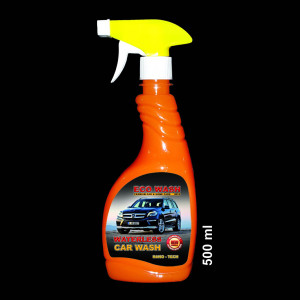| Ofogh Derakhshan Spadana |

| No Title | 0.03 MB |
| Registration Date | 30 Nov 2019 |
| Revision Date | 30 Nov 2019 |
| Share |
Automotive Maintenance
Car Wash Concentrate1 liter bottle is suitable for 7 to 10 times using and save 1000 liters of water Prevents generation of scratches on the body of the car Great cleanliness and brilliance Non-toxic Antistatic properties Eco-friendly
Washing a car is one of the effective parameters in its appearance and it also expresses its owner discipline and personality. Choosing the right detergent is an important factor to prevent turning out of scratches on the car body. The most common method is to use hot and cold water for washing, though, due to the water crisis, pressure washers have become very popular. On the other hand, various materials such as detergents, waxes, protective materials, and car shampoos are also considered to reduce water consumption. Through the development of nanomaterial science, new materials have been introduced to reduce water consumption to zero. Due to their compact structure, these materials impede the penetration of particles and environmental masses including dust and dirt when applied to the surface of the vehicle body besides, they provide hydrophobic properties. Because of their antistatic properties, these materials can penetrate to the surfaces with very small nanometer dimensions and transfer them to napkin fibers by creating interconnected strands. Thus, the very small, non-visible, nano-sized masses are wiped off the surface. These detergents also protect the surface after the cleaning process by creating a layer with high adhesion. It is noteworthy in the use of nanomaterials that there is no need to use water before washing with nanomaterials, and the use of these materials does not require special expertise.
In order to determine the cleaning level of the nanoparticle-containing material, a clean metal plate was used as the base. Three other metal plates of the same substance were contaminated with oil and carbon and then one of them was deposited as contaminated material. The second panel was cleaned with some common detergent on the market, and the third one was cleaned with nanoparticle detergent. Specimens were named as follows:
Clean sample (Clean)
Contaminated sample by oil and carbon (Dirty)
Cleaned Sample by common detergent (Commercial)
Cleaned Sample by Nanoemulsion Based detergent (Nano)
After the above process, to evaluate the cleaning power of each product, surface cleanliness was assessed by DSR test. As shown in the figure, the reflectance of the light emmited from the surface Nano-sample is higher than that of the other samples.